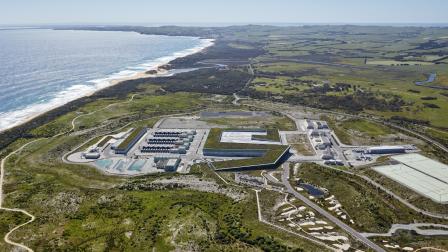Households are responsible for more than two-thirds of Melbourne’s total water use. As our population grows, and climate change makes rainfall less reliable, we all need to chip in to meet our target of 150 litres per person per day – because if we each save a little, we all save a lot.
From changing everyday habits to choosing water-efficient appliances, there are plenty of ways to make every drop count, every day. Get started with the tips on this page.
Simple water-saving habits
Most of us only need to save another 2 litres of water to get down to our target of 150 litres a day. That’s easy to achieve by making small changes to our everyday habits. Why not try:
- taking a minute off your shower
- brushing your teeth with the tap off
- going easy with the hose
- fixing any leaks
- scraping plates instead of rinsing them, before putting them in the dishwasher
- placing a plug or container in the sink when preparing vegetables, washing fruit or washing dishes
- using an air-blower or broom to sweep the driveway, instead of a hose.
Get the lowdown from comedian Andrew Hansen:
Indoor water-saving tips
Re-use greywater
Water from your laundry or bathroom can be used to keep your garden green. Get a bucket to collect water from your washing machine’s final rinse cycle, or from your shower or bath while you wait for it to warm up. Make sure you’ve been using low-sodium soap, shampoo and detergent, and use the greywater within 24 hours.
Treated greywater can also be used to flush toilets and wash clothes. To install a permanent greywater treatment and recycling system, you’ll need to choose an EPA-approved system and get a permit from your local council – for more information, read EPA Victoria’s greywater advice.
Install a water-efficient showerhead
Water-efficient showerheads can save over 10,000 litres of water each year. If you have an old or leaky showerhead, ask your retail water company if they have a showerhead exchange program.
Install a dual-flush toilet
Dual-flush toilets can save an incredible 35,000 litres of water a year for a family of four! Ask your water retailer if they have a toilet replacement program – if they don’t, and you need financial assistance, you might be eligible for the Victorian Government’s Community Rebate Program.
Buy a water-efficient washing machine
Did you know that front-loading washing machines can use up to 50% less water than top-loaders? A little research before you buy could pay off big time: look for at least a five-star water efficiency rating and four-star energy rating. For more advice on choosing water-efficient appliances, check out Sustainability Victoria’s washing machine information.
And remember, only run your washing machine when you have a full load of laundry.
Outdoor water-saving tips
Water your garden wisely
Be smart about when and how often you water your garden. When hot weather is forecast, it’s best to do this the night before to allow water to penetrate the soil and get absorbed by your plants. Using mulch or compost can also help increase water absorption and your soil’s moisture content.
Choose native plants
Australia is the driest inhabited continent on earth and our native plants have evolved to withstand these conditions. Why not replace non-indigenous plants with Australian varieties for a more water-efficient garden? To find species suited to your region, use Smart Water Advice’s plant finder tool.
Install a rainwater tank
Capturing rainwater to water your garden is a great way to reduce your water use, saving our high-quality water supplies for drinking.
In addition to choosing from a variety of sizes, materials and styles, you’ll also need to check if you need a permit and organise installation and maintenance.
For more information, visit the Department of Energy, Environment and Climate Action’s website.
Build a raingarden
Raingardens are low-maintenance gardens watered by stormwater or overflows from your rainwater tank. Not only are they water efficient; you’ll be helping protect your local rivers and creeks from the impacts of stormwater pollution.
They come in many different shapes and sizes – build one that suits your needs using our raingarden instruction sheets.
Support for vulnerable customers
The Victorian Government offers a number of rebates and concessions to eligible cardholders and customers in hardship situations, which aim to reduce water consumption and water bills. For details, read about their Community Rebate Program and concessions and benefits.
You may also like...
How we’re taking action
Melbourne’s water corporations are working hard with government and a range of other partners to secure our water supply.

Discover more ways to save water, with this initiative by Melbourne’s water industry.
Browse a range of resources for saving water in the home, garden and at work.




